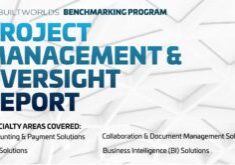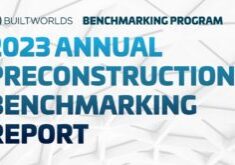The AEC industry is showing signs of innovation fatigue, moving from a nice-to-have mentality to a need-to-have mentality when seeking out solutions within their tech stack. A critical insight taken from the BuiltWorlds Americas Summit is the pressing demand among contractors for immediate integration of emerging tech. Within this piece we will uncover five distinct signs of the industry's maturation, indicating a reduction of fatigue and skepticism towards their tech stack.
How is the Industry Maturing?
1. Companies are becoming more selective
AEC companies are beginning to shift away from the "shiny object" syndrome, where they blindly adopt any new technology trend. Now, they are becoming more selective and evaluating emerging tech solutions based on their specific needs. This is achieved through data-driven analytics that allow them to make decisions backed by data, rather than following overly saturated tech trends within industry news.
2. Innovation teams are getting closer to jobsites
Leaders within innovation and technology have begun to understand that proximity matters and are finding deep value of being close to construction sites. This empowers them with real-world insights and a glimpse into the complexities that a project's worksite can hold. The shift also encourages collaboration between all stakeholders—bridging the gap between off-site teams and on-site workers to align solutions project-wide.
3. Deeper understanding of emerging solutions maturity
Companies within AEC are learning from the experiences of their industry peers, utilizing case studies and best practices to make better informed decisions about emerging solutions. They are also starting to run pilot projects to gain a deeper understanding of a solution's maturity. This ensures that they will invest in solutions that are effective and refined for their needs.
4. Increase in sensitivity towards interoperability
The space is experiencing a rising emphasis on ensuring that new tech seamlessly integrates with existing systems. This end-to-end integration helps to eliminate errors within the flow of data, functions, and operations, by providing a holistic view of a project. The growth of sensitivity also helps to prevent the creation of isolated tech silos that fragment a project's workflow.
5. Change of focus towards improving current tech stack
Instead of outsourcing new solutions constantly, companies are directing their attention towards optimizing their current tech stack. This is done through the fine-tuning of workflows, improving user adoption, and maximizing their ROI of tech investments.



Discussion
Be the first to leave a comment.
You must be a member of the BuiltWorlds community to join the discussion.